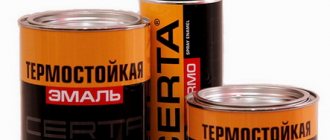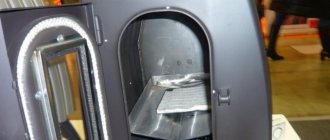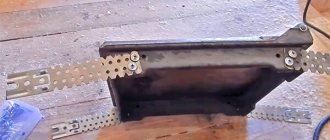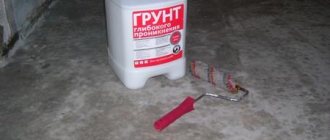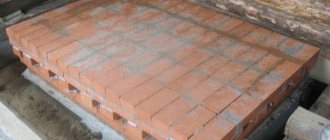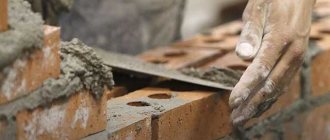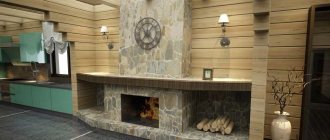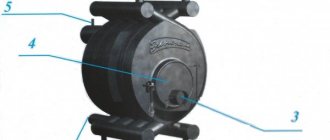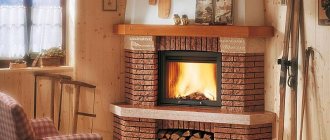What is mastic used for?
Fireproof mastic for furnaces is usually used to protect the joints of flues, furnaces and other heating units from the formation of cracks and open gaps. The main problem is that the temperature of combustion products can sometimes reach a thousand degrees Celsius, which leads to the appearance of mechanical defects.
When cracks appear, chimneys cease to cope with their main responsibility - removing combustion products, so the latter end up in the living area. Heat-resistant mastic for stoves protects against smoke in the room and an increase in the content of hazardous components and carbon monoxide. If this situation continues for a long time, serious harm can be caused to the human body.
The main area of application of fire-resistant mastic is to perform facing and other work that cannot be performed using standard adhesive mixtures. The main problem is that under the influence of high temperatures, the properties are lost, which can lead to the falling of the facing stone or the appearance of cracks. This material is often used for gluing insulating materials, however, this format of use implies unnecessarily high costs.
Types of high temperature sealants
Depending on the nature of the defect and the location of sealing, compositions for furnaces are divided into the following types:
- silicate heat-resistant sealants that can withstand temperatures up to +1500 °C without destruction;
- silicone-based pastes with a maximum temperature threshold of +250 °C (short-term - up to 350 °C);
- special glues and mastics designed for heating up to 1000 °C;
- adhesive mixtures for external cladding of heating stoves and fireplaces with tiles, heat resistance limit – 800 °C.
Important point. Do not confuse oven sealants with oil-resistant silicone pastes used to seal joints in automobile engines. Red motor compounds are sold in tubes and have a strong vinegar smell. They can be used to seal threaded connections of water heating systems.
Oven sealants also do not include fire-resistant paints or liquid insulation. The purpose of materials in this category is to protect the surfaces of building structures from fire and destruction in a fire. The maximum fire resistance limit of such coatings is 2 hours when in contact with an open flame.
Red car silicone seals are not heat resistant and are not used by stove makers
So that you can choose the appropriate type of sealing paste, we suggest looking at each type using specific examples.
Heat-resistant pastes
Fire-resistant sealant of this type is a black viscous substance made on the basis of sodium silicate with the following characteristics:
- operating temperature range – from minus 40 to +1500 °C;
- release form - plastic tubes-cartridges inserted into a mounting gun;
- hardens within 10-15 minutes;
- the hardened mass is inelastic and can deform by a maximum of 7% without destruction;
- applied at positive air temperatures - from 1 to 40 ° C (more precisely indicated on the tube of a particular product);
The black color of the heat-resistant material is visible from the bottom end of the tube - adheres well to rough and smooth surfaces - stainless steel, galvanized steel, ferrous metal, brick;
- price for a 310 ml tube - 6-9 USD. e. depending on the manufacturer.
Reference. Judging by reviews from homeowners, the most famous heat-resistant sealants are Penosil 1500 Sealant (manufacturing country Estonia) and Soudal (Belgium). It is not difficult to find cheaper analogues on sale.
Heat-resistant paste gives excellent results when sealing joints of fixed surfaces that have approximately the same coefficient of thermal expansion:
- cracks in the stove and fireplace masonry;
- through cracks in chimneys made of brick or metal, where outside air is sucked in;
- leaky welds on steel boilers;
- cracked sections of cast iron heat generators (does not always help).
Also, black paste sealants are used as a sealant between the masonry of a stove or fireplace and fittings - doors, views, ovens, and so on. A prerequisite is the laying of a damper tape (for example, an asbestos cord), which compensates for the thermal expansion of the metal. Otherwise, the frozen mass will crumble.
The fallen brick can be placed on heat-resistant paste. Complete solidification of the mass occurs after heating the oven.
How to use heat-resistant sealant correctly:
- The minimum width of a crack or gap between elements is 5 mm. Thick paste will not fit into a narrower gap.
- Elimination of defects in a stove or boiler firebox is carried out “cold”. Fistulas in the chimney can be repaired “hotly”.
- Surfaces are cleaned of dust and degreased as far as work conditions allow.
- The substance is applied with a construction gun.
An example of applying the Soudal composition to the opening before installing the door.
When using some compositions (for example, Soudal), the manufacturer recommends lightly moistening the surfaces with water. Wear rubber gloves - the sealant has high adhesion to various materials, making it difficult to wash your hands.
Silicone seals
One-component heat-resistant silicone with various additives can withstand heating up to 250-285 °C, short-term - no more than 315 °C. Common brands are Penosil, Tytan (Titan), Germent. In the stove industry, sealant is used for a chimney whose surface is not too hot, for example, connected to a gas boiler.
For reference. The temperature of the chimney pipe of conventional gas boilers rarely reaches 120 °C, and that of condensing boilers - 100 °C. The flue of a fireplace, brick stove or solid fuel boiler heats up to an average of 150-200 °C, a sauna heater - up to 300 °C. This refers to the inner walls of the channel, the outer walls are much colder.
A semi-liquid silicone mass of red (sometimes blue) color, after hardening, forms an elastic barrier that can stretch and contract by 100% (2 times). The characteristics of heat-resistant silicone-based sealants look like this:
- operating temperature – from minus 40 to plus 250 °C;
- packaging – 310 ml pistol cartridges;
- hardening time – 20 minutes;
- adhesion to any smooth surfaces - glass, metal, ceramics and the like;
- applied “cold” at ambient temperature plus 5-40 degrees;
- UV resistant;
- joint width and depth – 6 mm or more;
- the cost of packaging 310 ml is from 3 to 7 USD. e.
In addition to the external sealing of cracks in brick chimneys, silicone paste can be used for external sealing of sandwich chimneys during the installation process. Sealant cannot be used in very hot furnaces of boilers and fireplaces.
Important advice. Silicone is applied directly to the joint of the sandwich modules when the chimney is not planned to be disassembled in the future. Although the mass is elastic, it will not be possible to separate the sections after processing - you will have to cut them with a grinder. It is better to apply the composition after assembly directly to the joint - where the end of the “mother” rests against the side of the “father”.
Adhesive facing compositions
When installing stove doors, dampers and ovens inside the brickwork, a fire-resistant sealant is used - graphite-asbestos cord. To prevent it from moving or falling out during installation, we suggest fixing it with a special glue shown in the photo. The substance “holds” a temperature of up to 1100 ° C and sets within 10-20 minutes.
If the masonry of a stove or fireplace is covered with small cracks affecting the bricks, it is unrealistic to seal them with heat-resistant sealant - the defects are too narrow and deep. In this case, one of the heat-resistant facing compositions will help:
- one-component tile adhesive with the addition of fire-resistant mineral fillers, temperature threshold – 800 °C;
- special mastics for gluing tiles and stone with a heat resistance limit of +1000 °C;
- adhesive mixtures based on chamotte and kaolin dust that can withstand heating up to +400 °C.
The point of using adhesives and mastics is as follows: all small cracks are closed by processing and finishing the walls of the oven with tiles or tiles. After repair, the fireplace is not only sealed, but also acquires a wonderful appearance.
Important! Before covering the stove, it is necessary to eliminate the cause of the cracks, otherwise the new design will quickly deteriorate or fall off. Adhesive mixtures and compositions do not have mobility and elasticity.
The technology for applying mastics, the thickness of the layer and the hardening time of the adhesive sealant are necessarily described in the instructions on the packaging. Surface preparation is done in approximately the same way - clay, paint and dust are removed, masonry joints are cleared. Then priming is done with a deep-penetrating compound (of the same brand). Fireclay adhesive mixtures are sold in bags, mastics are sold in plastic buckets of 5-15 kg.
-Heat, -thermo, -fireproof - what's the difference?
In specialized stores you can find a huge amount of mastic, so some buyers are surprised by this choice. In addition to the fact that heat-resistant mastic for stoves and fireplaces is produced by various factories and companies, they also differ in name.
In recent years, many manufacturers have begun to use some marketing tactics to increase sales of their products. So, some of them indicate that specific products:
- Withstands various chemical irritants;
- Has a shorter hardening time;
- Special components or production technologies are used.
In fact, the difference between all of them is minimal, since all products are produced using the same technology. When purchasing, you should pay attention to the type of mastic: heat, thermal and fire-resistant. The main difference lies in the operating temperatures that they can withstand without cracks or other mechanical damage.
According to numerous studies, average operating temperatures are:
- For heat-resistant mastic - up to 1,600 - 1,700 degrees Celsius;
- For fire-resistant mastic – up to 1,300 degrees;
- For heat-resistant mastic - up to 1,100 degrees.
It is recommended to use only heat-resistant mastic, however, if the issue of price is quite acute, you can differentiate the working areas in order to use simpler analogues in more distant areas.
Neomid Supercontact 1300 heat-resistant adhesive mastic
Universal thermal and moisture-resistant adhesive mastic (the dried adhesive joint can withstand temperatures from -50° C to +1300° C) “NEOMID” is intended for masonry and cladding of stoves and fireplaces, gluing tiles and metlakh tiles, glass, polystyrene foam ceiling tiles, wood, cardboard, concrete , brick, natural and artificial stone (except for gypsum-based materials) in any combinations, shallow putty of plastered and concrete surfaces, gluing plywood onto a screed (except for surfaces in constant contact with water). When gluing materials that have periodic contact with water, use moisture-resistant sealants or grouts for the seams. Contains antiseptic additives. Prevents the formation of mold and fungi. APPLICATION: The mastic should be mixed before use and, if necessary, diluted with water no more than 5% by weight. Level the surfaces to be glued, dry them, clean them from dust, dirt, grease and oil stains, remove crumbling and weak areas. Apply with a comb spatula to one of the surfaces to be bonded in a layer of up to 4.0 mm. It is not recommended to increase the applied layer by more than 4 mm. Gluing tiles and stones: press the tile with applied mastic for 5-10 seconds. Grout the joints only after the mastic has completely dried. Drying time depends on the temperature of the work, the thickness of the seam, the absorbency and the area of the surfaces to be glued. For elements measuring 0.09 m2 at a temperature of 20°C, humidity 65%, drying time is 5 days. When gluing elements larger than 0.09 m2, the drying time of the adhesive joint can increase significantly. Stoves and fireplaces must be repaired and tiled while hot, heated to a temperature of +30°C to +50°C. Do not apply at temperatures below +5°C. Wash tools and stains with water immediately after finishing work. Consumption: 0.5 - 1.7 kg per square meter of surface in one layer, depending on the thickness of the adhesive layer. STORAGE CONDITIONS: from -30°C to +30°C. The mastic can withstand 5 freeze-thaw cycles and restores its properties after defrosting. The mastic is fire and explosion proof. PRECAUTIONARY MEASURES: Use rubber gloves when working. Beware of contact with eyes. In case of contact, rinse thoroughly with water. Keep away from children. COMPOSITION: Binder, inert filler, modifying additives. SHELF LIFE: 12 months.
Choice of mastic
The process of choosing mastic is both complex and simple. In specialized stores you can find a huge number of offers, and consultation with specialized specialists will help you choose the right option. It is always worth remembering some features of the choice.
Criterias of choice
First of all, you need to focus on the operating temperature of the mastic. If you plan to cover the front part, then you should choose a heat-resistant option. Carefully calculate the area of different zones to reduce purchasing costs.
If the issue of price is acute for you, then you should also focus on the price, but you should not skimp on the type of mastic, as the consequences can be dire. Domestic products have a lower price and are practically no different from their foreign counterparts.
Top brands
Among the best brands available on the Russian market, products from the following manufacturers stand out:
- Terracotta (Russia) - the average price for a 2.5 kg bucket is 150 rubles.
- Neomid Supercontact (Russia) – a 20 kg bucket costs about 1,300 rubles.
- Calorygeb (France) – produced in small quantities. The average price is 600 rubles.
- Tytan (Poland) - an analogue of the previous option with the corresponding price and volume.
- Collafeu (France) is one of the best and most expensive options, which is characterized by excellent adhesive properties and ease of use.
How to make mastic for the oven with your own hands?
For some customers, the issue of price is very important, so such people do not want to spend large sums of money on the purchase of specialized mastic for finishing fireplaces. Fortunately, there are several simple and effective recipes that really help you save money. DIY mixtures can be created from:
- Clay and sand;
- Concrete mixture.
The first option is more preferable, since clay is a universal material that can easily withstand high temperatures. This recipe has been used for a long time for the construction of stoves, so there is no need to doubt its effectiveness.
To prepare mastic with your own hands, you will need clay and yellow sand of small and medium dispersion in a ratio of two to three. These materials are mixed with each other until smooth, and then water is added. The finished material should have a fairly thick consistency. If too much water is added, the adhesive properties will be reduced, which will complicate the work.
Fireproof adhesive for fireplace cladding
Heat-resistant tile adhesive for finishing stoves and fireplaces
Oven glue
If it is necessary to line the fireplace with decorative tiles or stone, then it is necessary to use glue specially designed for this. The composition is dominated by mineral components, which provide high plasticity and adhesion - adhesion of surfaces. As a result, the likelihood of tiles falling off during the operation of the fireplace is reduced.
For cladding, in addition to clay-based glue, a heat-resistant solution of soapstone powder with liquid glass is often used. Soapstone is a natural stone, also called soapstone, and contains talc, magnesite and chlorite. Crushed stone is used for glue; the fractions must be very small so that the connection with liquid glass is uniform.
This glue is also called Finnish, it is distinguished by high heat transfer, thanks to which the fireplace will heat the room faster, as well as by its plasticity and elasticity under the influence of high temperature.
Instructions for use
The use of heat-resistant mastic is a fairly simple and straightforward process that does not require special skills.
- It is recommended to perform temperatures in the range from five to forty degrees Celsius, since it is within these numbers that the maximum “setting” of the mastic is achieved. The material is supplied in the form of a dry mixture. To prepare working mastic, you need to add 300 ml of water to a kilogram of dry component.
- Before application, it is necessary to thoroughly clean the working surface from dust and dirt that may have remained at previous stages of work. For these purposes, you can use a wire brush or other analogues. There is no need to degrease the surface with acetone or solvent.
- The mastic itself is applied to the surface using a plastering tool in a thin layer, the thickness of which is about five millimeters. If there is a need to create a layer of more than 15 mm, then a metal reinforcing mesh should be used to add strength.
- It takes about 36-48 hours for the mastic to completely harden. During this time period, it is not recommended to light a fire in the fireplace, as this can lead to linear expansion of the mastic and an increase in its volume.
